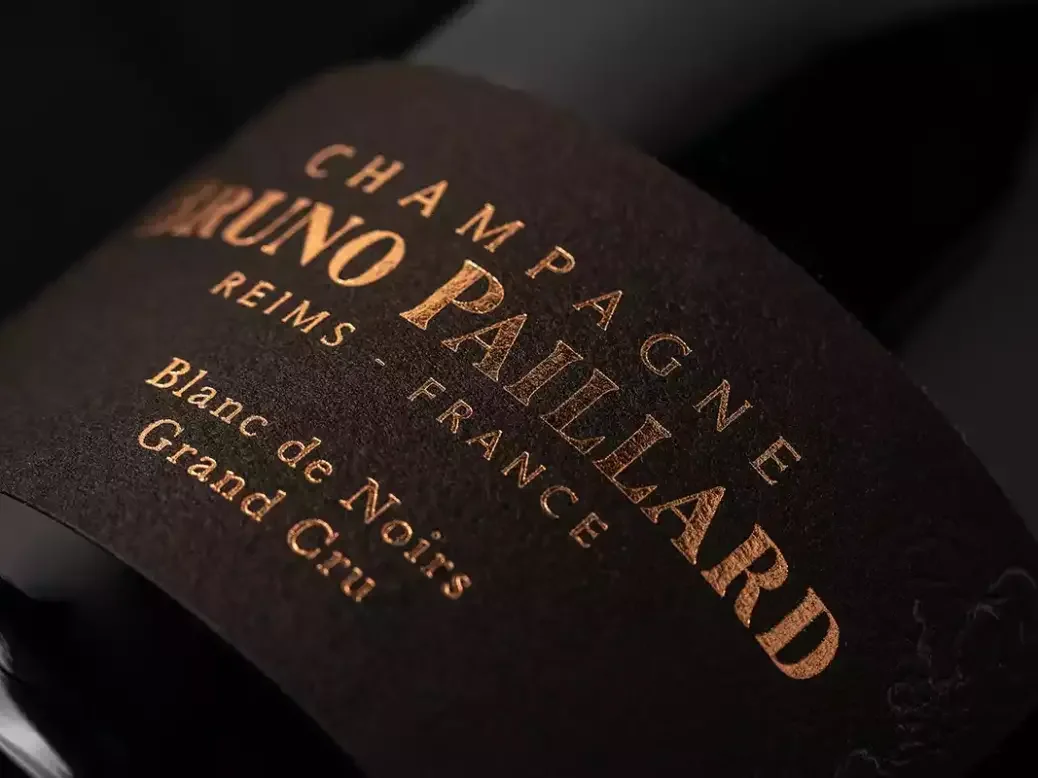
Neil Beckett greets the inaugural release of Bruno Paillard Blanc de Noirs Grand Cru MV Extra-Brut a perfectly fitting new cuvée that highlights the austere beauty of northern Montagne de Reims Pinot Noir.
All good Champagne houses demonstrate meticulous attention to detail, offer a carefully considered and clearly differentiated range of wines, are guided by firmly held principles, set themselves high standards, and are sustained by a long-term vision. But none more so, perhaps, than Maison Bruno Paillard, now run by the brilliant and charming Alice Paillard, the daughter of the eponymous founder, who shares his ambition, passion, and perfectionism.
She came to London in September to launch the latest addition to the house’s impressive range—its first blanc de noirs—which is in some ways surprising, given that its flagship Brut Première Cuvée is Pinot Noir-dominant, apparently reflecting Bruno’s own preference and taste, and when there have long been both a Vintage and a Multi-Vintage blanc de blancs. But this is the last house that would be in a rush to round out the range with a style in which it was not completely convinced it had the right wine. Despite the extra-brut dosage across its entire range and the fashion for no-dosage Champagne, Bruno Paillard did not release its Zéro Dosage until 2018 (after a discontinued early trial in the mid-1980s). And when it was going to add a blanc de noirs, it was again going to be only when it was sure it had a distinctive and worthy wine.
Bruno Paillard Blanc de Noirs: A rich and precise expression
Alice explained the very clear image they had for the wine, its “raison d’être”: “A rich and precise expression of Pinot Noir from the northern crus of Champagne,” with a consistency of style that could come only from blending different vintages. She described Pinot Noir as a “noble and fragile” grape variety that she and her father prized for its “great finesse.” While they find many blancs de noirs “very opulent, very vinous, especially from the southern Montagne de Reims, that is not the idea here—we want to show another aspect, to have a different proposition.”
Roughly two thirds of the blend come from the fashionable northern Montagne grands crus of Verzenay (where the house has acquired vineyards), Verzy, and Mailly, while the rest comes from the southern Montagne grand cru of Bouzy (where the house also owns vines; it now has an estate of 32ha [80 acres], all farmed organically or biodynamically, which provides some 60 percent of its grape requirements). The base vintage of the first release is 2018, with reserve wines from a perpetual reserve started in 2015; the reserve wines represent 12.5% of the inaugural release, but Alice explained that the 2019 base will have 25%, and the 2020 base more again, taking it closer to the high proportion (25–45%) elsewhere in the MV range. As there (roughly 20%), nearly one quarter (24% according to the typically detailed and helpful back label) has been barrel-fermented.
The wine will always have at least three years on its lees and six months post-disgorgement. The dosage for the first release is 3g/l; Alice agreed with her father that the wine would be “easier” with 1g/l more—but not, she added, “better,” explaining that they envisaged a graceful evolution in bottle and that, like the rest of the line, it is intended to be drunk with food (which the carefully chosen dishes at The Aubrey certainly vindicated). Asked at the French launch whether the wine was as she expected, Alice replied with admirable honesty and modesty that she had not known exactly what to expect: “It’s very early in its evolution, but I am happy it’s going in the right direction.” I should say so. And with both this initial release and subsequent releases, there is every promise that it will go from strength to strength.
Tasting
Bruno Paillard Blanc de Noirs Grand Cru MV Extra-Brut
(100% Pinot Noir; disgorged November 2022; dosage 3g/l)
Pale-to-medium Welsh gold, with a fine, persistent mousse (finer after a night in the fridge). All the hoped-for aromatic finesse and intrigue; different from different glasses and with time in the glass, of course, but both expressive and enigmatic from all of them—enigmatic in the sense that the harmony and intricacy of the aromatic weave is such that no scents dominate or even linger, floating fleetingly to the top then letting others have their brief and subtle word: fresh-baked bread (but nothing raw or yeasty), pink grapefruit (grilled with demerara sugar from larger glasses), red fruit (cranberry, redcurrant, raspberry), ginger, marine, oyster shell (but not at all too reductive), floral (rose) top notes; then with air, or in the larger glasses, white peach, acacia honey, white pepper. A finely integrated mousse, elegant and ever-rounder and silkier, the larger the glass. Perfect definition and tension, a cool edge without being edgy, the dosage perfect or on the way to being—the bent note before the final resolution—more than perfect in being so close that you can already clearly see how perfect it will be. A chalky, dry, powdery, persistent finish, the faintest bitterness and gentlest phenolic squeeze enhancing its huge gastronomic potential. A slightly austere, cool, serious beauty, a black horse at a comfortable canter—more Bach violin sonata or Schubert piano trio than Beethoven’s “Ode to Joy,” but no less moving and powerful for that. | 93–95






